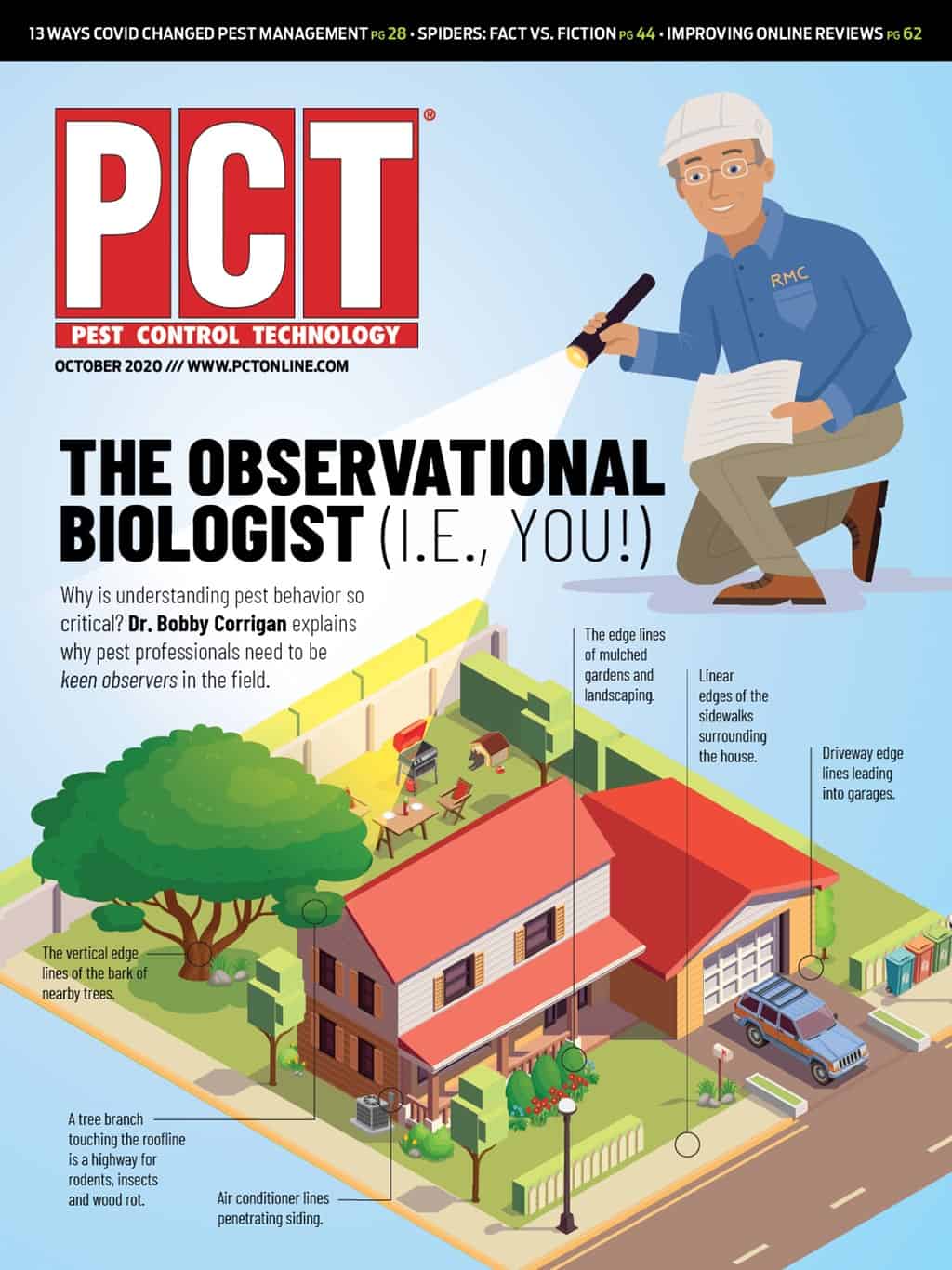
© DragonImages | iStock
Editor’s Note: This article was reprinted with permission from Techletter.
On a carpenter ant call, one of the main things you need to determine is whether the ants are nesting inside or outside. If you can interview the customer, you can gain a lot of useful information that will point you in the right direction. Here’s a list of nine questions you should ask the customer and why they’re important:
- Was your home treated for carpenter ants before? An earlier treatment may have failed, or a nest might have been missed.
- When did you first notice the ants? If indoor activity has been going on for some time, the chances are greater that the ants are nesting inside.
- How many ants do you see? Large numbers of ants foraging inside make an indoor nest more likely.
- Do you see the ants indoors year-round? Ants are not active outside during winter months in cooler climates. If ants are found indoors in the winter, it likely means an indoor nest. In cool climate, if carpenter ants are seen only during warm months, it’s more likely that they are foraging in from outside.
- Where do you see the ants most often? If ants are regularly in a room that does not have food, there’s probably a nest nearby. If the activity is in a bathroom or near another moisture source, the nest is probably very close. If carpenter ants are mainly seen around an outside kitchen door, they’re probably coming in from outside looking for food.
- Have you had any wet wood, broken pipes or a leaky roof in the last year or two? If so, where? A structure that has had water-damaged wood or moisture problems is much more likely to be infested by carpenter ants than a building that is dry. Even after the moisture problem is resolved, carpenter ants can continue to nest in the softened wood.
- Have you seen any ants with wings inside? If carpenter ant alates (swarmers) are seen inside, a nest is almost certainly within the structure. It would be rare for swarmers from an outside nest to end up inside. An indoor nest that produces swarmers has probably been there for at least three years.
- Have you heard any strange noises inside the walls? Carpenter ants in their nest make a rustling sound sort of like crinkling cellophane. If you hear this with your ear next to a wall, you’ve found the nest.
- Have you noticed any little piles that look like sawdust? If so, where? Carpenter ants keep their nest galleries clean by pushing excavated wood, dead insects and other debris out through a tiny slit. These “dump piles” are usually located just below the nest site. If no dump piles are found, it doesn’t necessarily mean the nest is not inside. The piles could be inside a wall void and not visible.

© Stoy Hedges


Explore the October 2020 Issue
Check out more from this issue and find your next story to read.
Latest from Pest Control Technology
- SiteOne Hosts 2024 Women in Green Industry Conference
- Veseris Celebrates Grand Reopening of the Miami ProCenter
- Rollins' 2024 Second Quarters Revenues up 8.7 Percent YOY
- Fleetio Go Fleet Maintenance App Now Available in Spanish
- German Cockroach Control Mythbusting
- Total Pest Control Acquires Target Pest Control
- NPMA Workforce Development Shares Hiring Updates
- Certus Acquires Jarrod's Pest Control





